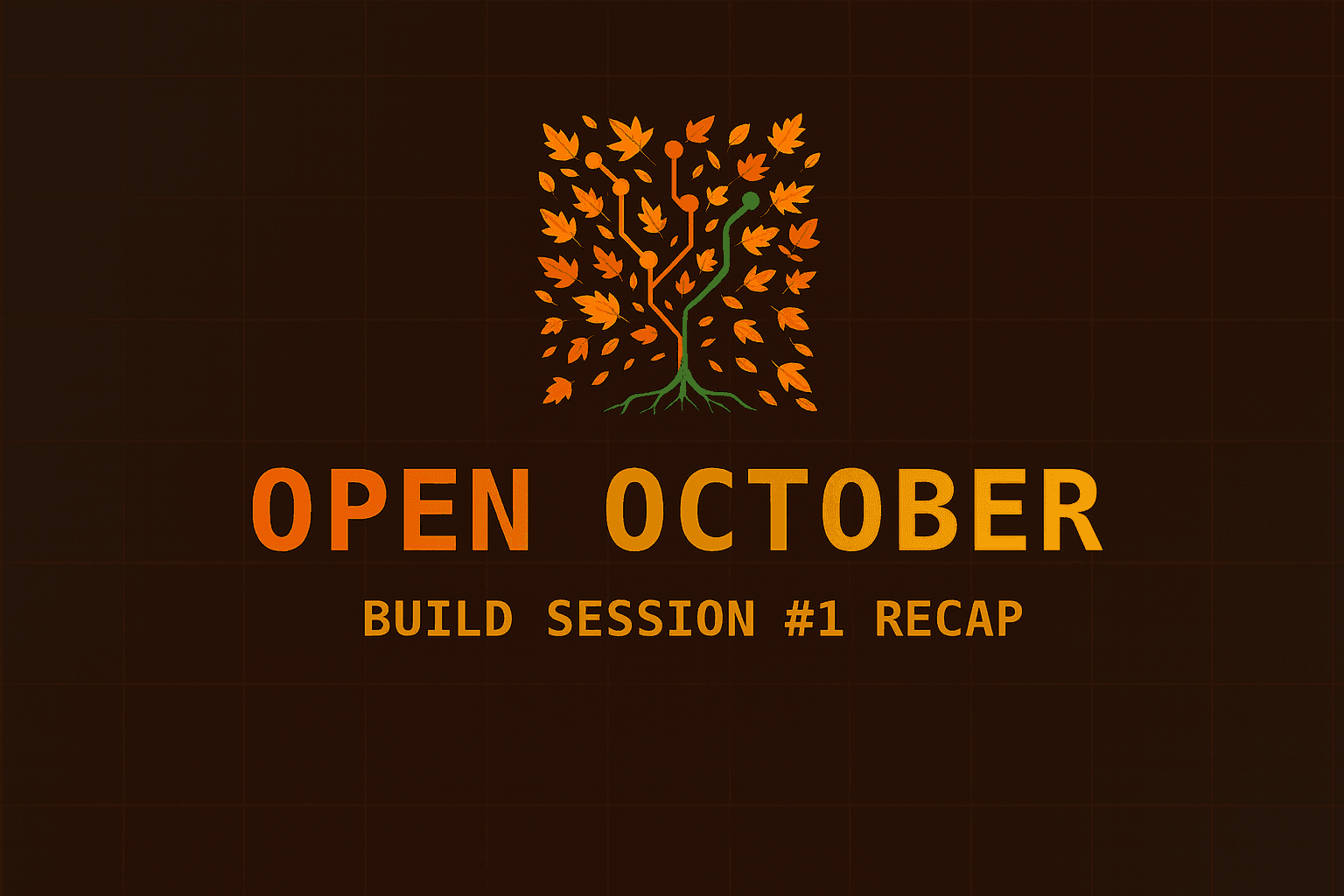
🛠️ Open October Build Session #1 Recap
Our first build session brought together new and returning contributors to share updates and project ideas.
On a warm night in Detroit, builders, advocates, and curious newcomers gathered for a conversation that felt both timely and visionary. At the heart of it was Jeremy Mahrle — Founder of Proof Wireless and a former city commissioner — who gave a powerful talk on how decentralized infrastructure is flipping the script on how we build the physical world.
What Jeremy shared wasn’t hype. It wasn’t “number go up.” It was about people — people in Detroit and beyond — using tools once locked behind billion-dollar corporate budgets to build community-owned networks. This is the DePIN movement: Decentralized Physical Infrastructure Networks.
“You can build the most elegant solution in the world, but if the laws and institutions and public perception aren’t ready for you — it won’t scale.” – Jeremy Mahrle
Jeremy began his career working under Senators and Congresspeople. But it was during COVID — when teachers couldn’t connect with students and institutions failed those who needed help most — that he started searching for real answers.
That journey led him to DePIN.
He highlighted how the early success of Helium proved that you don’t need to be a telecom giant to build a wireless network. You can set up a hotspot, connect people to service, and earn rewards. Real people. Real devices. Real networks.
Jeremy’s talk walked through examples like:
Helium Mobile: Replace traditional towers with community hotspots. Businesses or gardens in Detroit can literally beam phone service to the neighborhood and get paid for it.
Hivemapper: Real-time maps built by dashcam footage instead of Google Street View vans. Used by companies like Volkswagen to train autonomous vehicles.
Render & Akash: Airbnb for GPUs. Your idle computer can become part of a global compute network, powering everything from video rendering to AI.
DIMO: A plug-in for your car that captures performance data — you own the data, not the car company.
Grass: Turn your internet bandwidth into a resource. Share your unused connection and earn rewards.
These weren’t just technical demos. They were examples of what happens when blockchain meets real-world problems. And when incentives go directly to the people building.
Jeremy didn’t sugarcoat it. Some projects will fail. Some networks are overbuilt. Token prices rise and fall. This isn’t a “get rich quick” scheme — it’s a movement for those who believe in building better infrastructure from the ground up.
His advice? Do your own research. Join the community. Ask questions. Talk about what you’re doing.
The night ended with open questions from the audience and a heartfelt reminder that Detroit has always been a place where builders thrive. That the tools we now have — from Helium routers to dashcams — are just the beginning of a new model where the people who deploy the network are the network.
“This isn’t magic. These networks come with risk. But the ones that earn trust — by delivering real value — those are the ones that will reshape the world.”
Get notified when I publish new posts about building meaningful tech for real communities.

Our first build session brought together new and returning contributors to share updates and project ideas.

OpenOctober kickoff recap: creatives + technologists aligning to build open, local-first tools for Detroit. Submit your project by Oct 7.

At this month’s Vibe Coding meetup, we explored how AI tools like Cursor can speed up projects—or derail them without clear direction. I shared the Renaissance City LaunchPad, a cultural shift and support ecosystem empowering community organizers to build, own, and sustain their own technology.